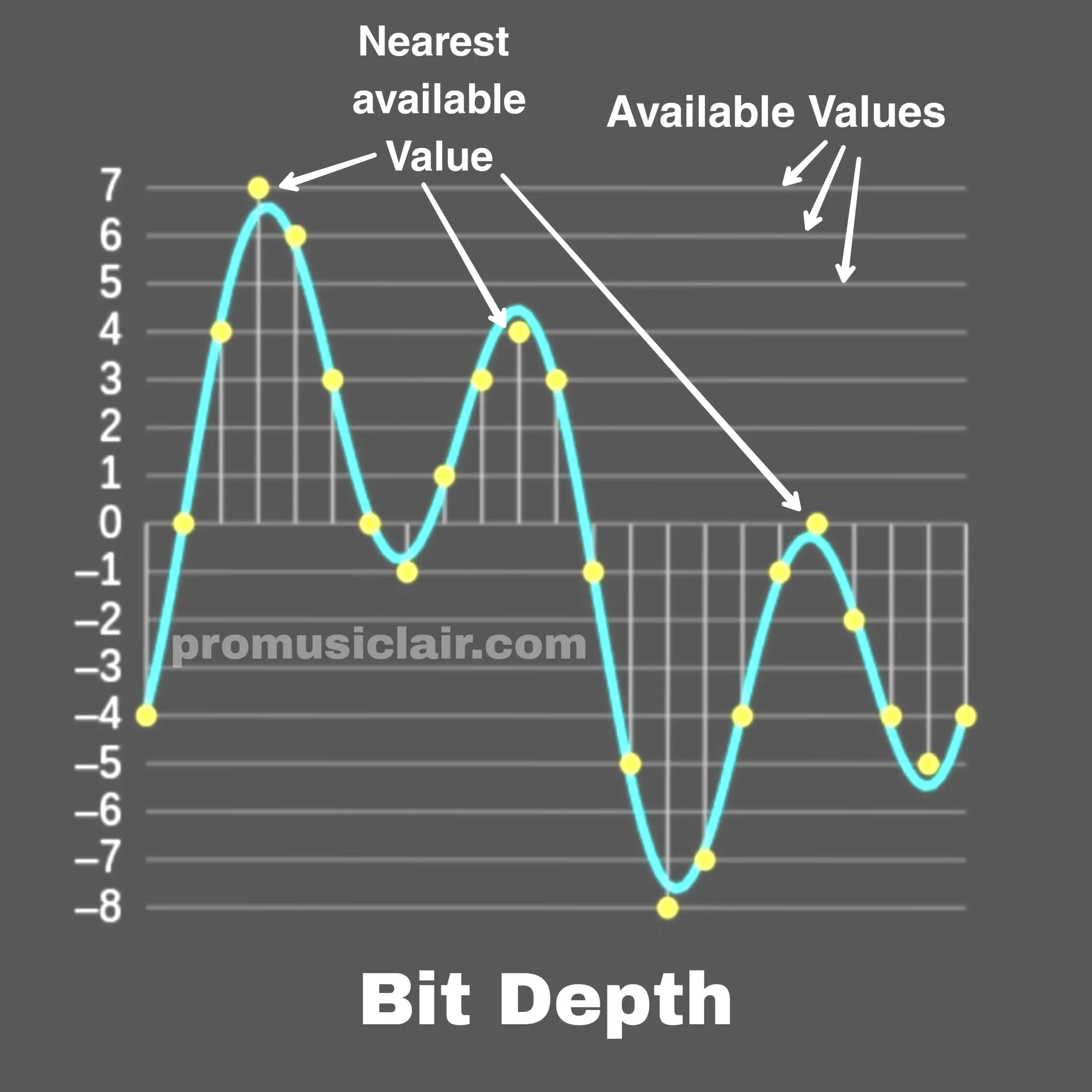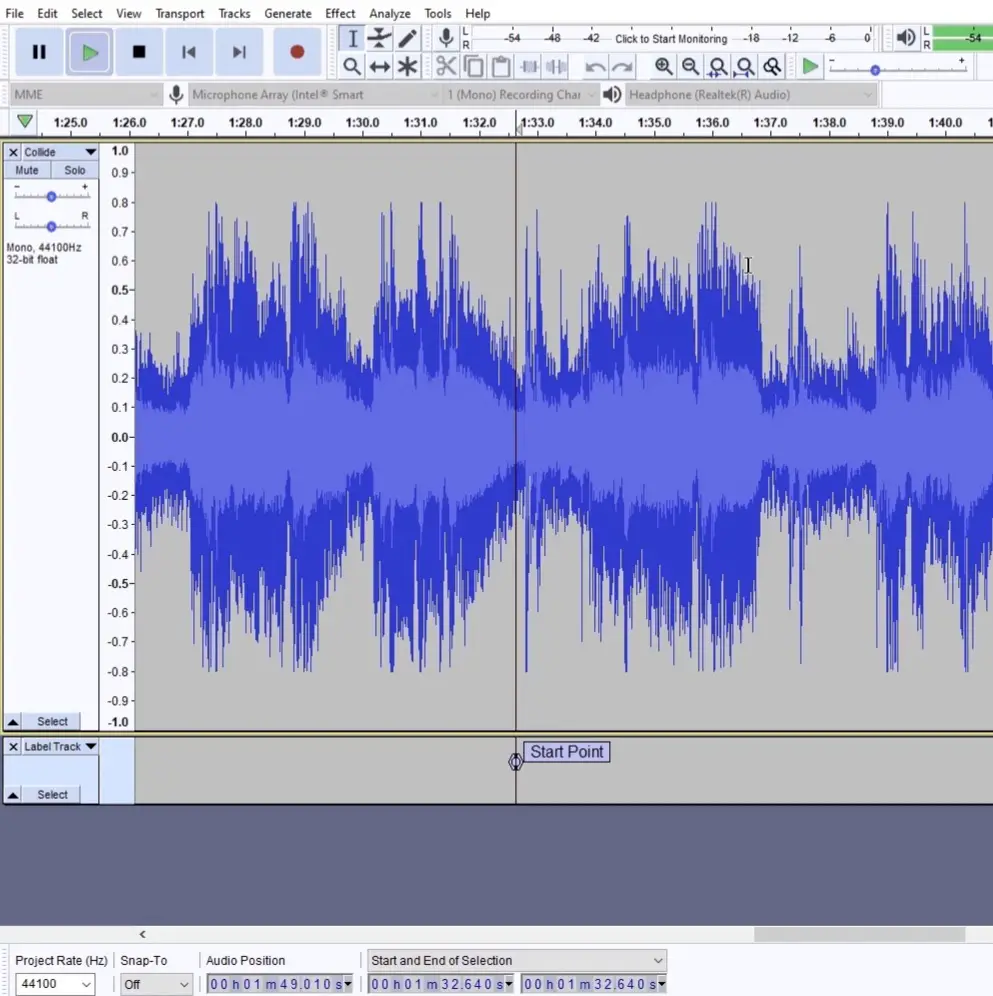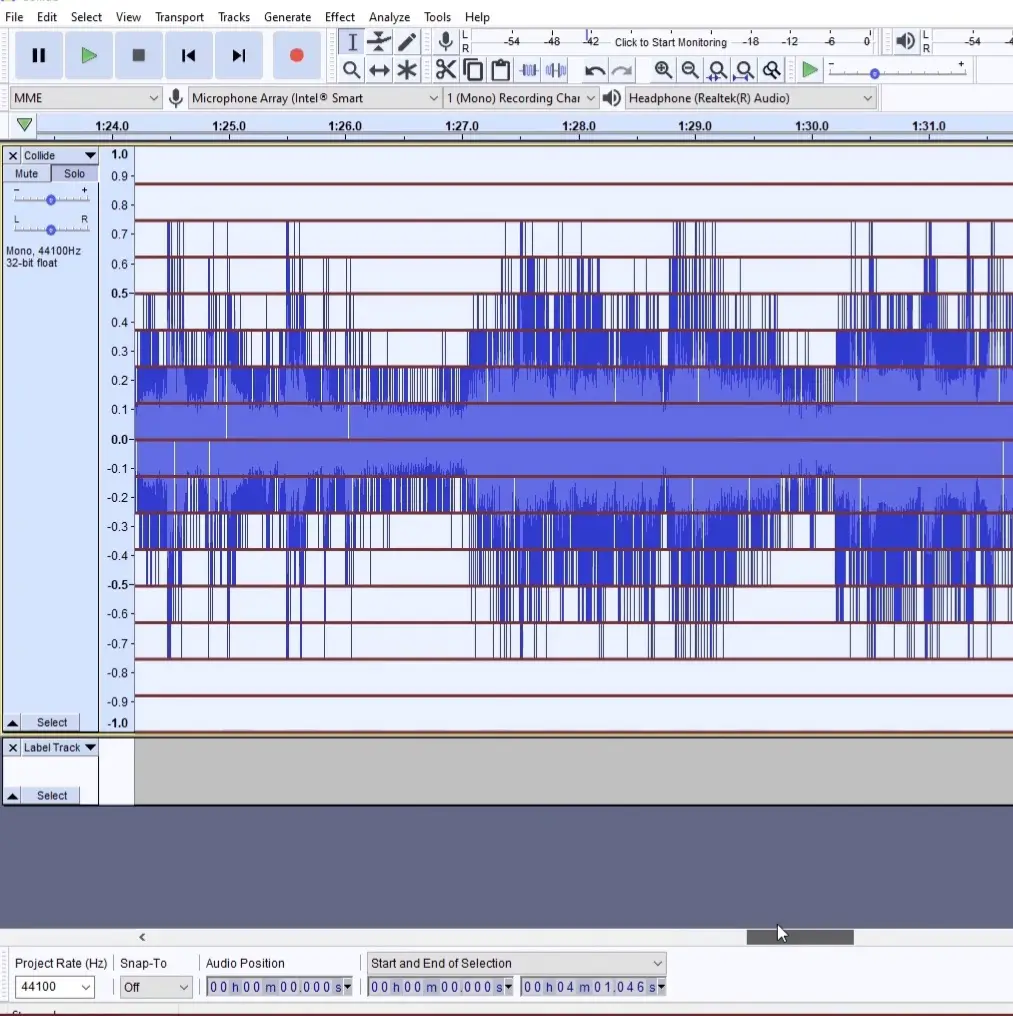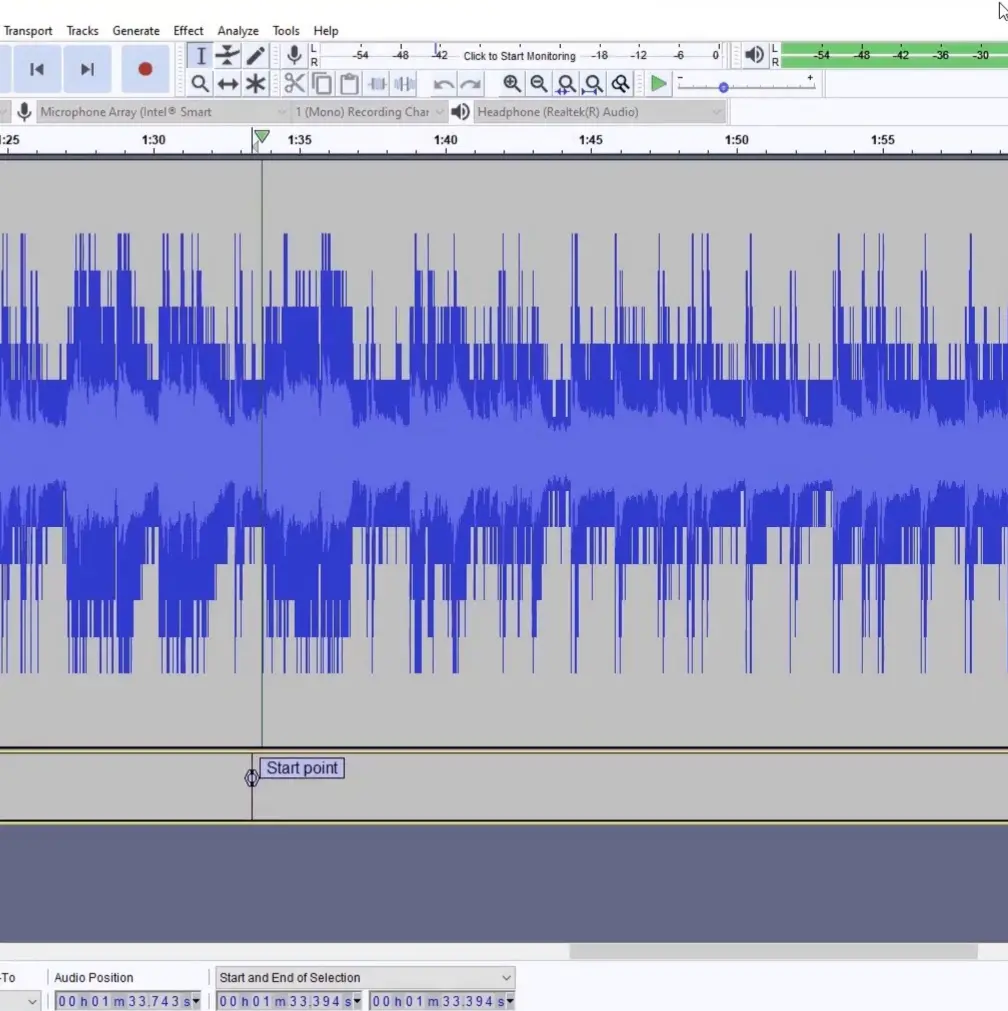Contents
How does bit depth affect sound quality?
In the days when music was recorded on the analog medium, the term bit depth would be of no relevancy. But since the dawn of digital era, this term has held a significant role in music production.
Well in music production bit depth comes into play every now and then. So lets understand- How bit depth affects sound quality?
The short summary is that bit depth does affect sound quality in a positive and constructive way. High bit depth simply means high resolution audio. The higher the bit depth the less is the Signal to Noise Ratio or SNR generated due to quantization error and provides higher dynamic range to the audio. High bit depth also contributes to higher file size.
Now to understand how bit depth affect sound quality, let’s know what does bit depth actually mean.
Before we start, let me introduce you to our –
Make sure to check it out.
What is audio bit depth
If you need to convert analog audio into digital data or information, you have to first slice it into pulses and then assign an amplitude value to each pulse.
Next you need to store all these pulses as a stream of bits of information.
The number of these bits in the signal thus converted is called its bit depth.
In a nutshell, the number of amplitude values available in a signal is the bit depth of that signal.
Some of the commonly used bit depths and the amplitude values are –
- 16-bit: 65,536 amplitude values
- 24-bit: 16,777,216 amplitude values
- 32-bit: 4,294,967,296 amplitude values
How Bit Depth Affects Audio Resolution
The number of bits in a sample or bit depth is actually the resolution of the sample.
All the analog signals are converted into digital signals via Pulse Code Modulation.
Analog to Digital conversion requires slicing of the analog audio into a number of pieces of information to store in the system to be recreated when required.
When it is sliced into pulses, each pulse receives an amplitude value which is available in the digital converter system.
The amplitude values that can be assigned to the pulses are limited and fixed in the system. For illustration purpose they are shown as steps which are horizontal lines in the image below.
See how the blue analog audio signal is sliced into vertical pulses which receive the amplitude values nearest to the available amplitude values of the system or horizontal lines.
- Note that the amplitude values cannot be assigned other than the available amplitude values in the system.

1.1 | Bit Depth Illustration
Now if you try to understand with this image, the number of digital steps or available amplitude values to be assigned in this system is quite less.
Hence each pulse sliced out of this audio signal will receive amplitude values only out of these 7 to 8 steps from 0.
When there are so less amplitude values to be assigned to the pulses, the resulting stream of these pulses will sound brittle and noisy. Also the bit depth of such signal is low and low bit depth means low resolution.
On the contrary if the amplitude values or the horizontal lines are increased in the image above, the available values will increase and the pulses will receive more accurate values so the resulting signal will get smoother.
Since more amplitude values means high bit depth, the resolution will increase.
Bit depth Controls Dynamic Range of the Audio
The dynamic range in simple terms is the range of extent upto which your audio contains the quietest and the loudest moments. In other words it’s the range of the lowest amplitude to the highest amplitude points of your audio and it suffers at lower bit depth.
Also it’s the maximum signal to noise ratio of a system.
Meaning, how much amount of wanted or desired audio signal is present as opposed to the noise or undesired signal in the audio.
The noise is what the digital systems are prone to introduce due to various conversion errors.
- When the audio is at a lower bit depth the noise floor is easily audible and interacts with the sections if they are recorded at low input gains.
For each 1 bit introduced in a signal, you get 6 dB of dynamic range. This means in a 1 bit audio, the noise will be inaudible till the gain is raised to 6 dB and can be heard after that.
The dynamic range values (in dB) for higher bit depths can be known by the product of the bit depth and 6 db.
Whatever the product is, the noise floor will stay inaudible till the gain is raised to that value.
At a higher bit depth, the noise floor will get very low to be heard unless you raise the gain to 144 dB in case of 24 bit audio or 96 dB for 16 bit audio.
With such a low noise floor at high bit depth, you can safely lower your input gain since you have space for recording much quieter sections as there is no noise present now to interrupt them.
This ability to record at a lower input gain at higher bit depth than before means your dynamic range has increased!

1.2 | 16 bit audio

1.3 | 4 bit audio quantization values in red

1.4 | 4 bit audio waveform
Image 1.4 is a 16 bit audio and looks smoother and has a good dynamic range.
It’s reduced to a 4 bit version as in image 1.4. See how crushed and flattened it looks?
In a 4 bit audio there are only 16 amplitude levels (red horizontal lines) to which the samples got assigned as in image 1.3.
This is how the dynamic range gets crushed at lower bit depth.
Bit Depth Reduces Signal to Noise Ratio
When the analog signals are converted into discreet pulses or bits, the amplitude values that the pulses receive are not accurate but are nearest to the available amplitude values.
This process of assigning available amplitude values to the samples is called quantization.
Since the amplitude values assigned differ from the actual values, this difference introduces error which is called quantization error.
Basically, the difference between the original signal and the quantized signal is called as quantization error. The quantization error introduces noise in the audio.
This noise is a function of the audio signal. It means that the noise is not an independent noise but depends on the audio itself.
- Now as you know that a 1 bit audio has 6 dB of dynamic range and 4 bit audio had 24 dB dynamic range similarly 16 bit audio has 96 dB dynamic range. What does it mean in context? It means that for a 4 bit audio, the noise due to quantization error will be heard only if you increase the gain to 24 dB and not below that. Similarly for a 16 bit audio, the noise will be heard only when the audio is heard at 96 dB gain. And at 32 bit, the noise can only be heard when you raise the gain to 192 db. With this relation, its clear that the noise due to quantization error gets harder and harder to b heard at higher bit depths. With 32 bits, practically you will never hear the noise at all!
Bit Depth Affects Audio File Size
This is pretty much self explanatory that the size of bit depth determines the audio file size.
Although this is not that significant effect but it’s worth mentioning in case it matters to you.
Since every sample has information assigned to it, the more the samples, the more will be the information.
The more is the information, the more is the size of the audio files. Simple as that. If you are going for high quality audio, the file size should not be a big issue.
Is 16 Bit or 24 Bit Audio Better
We have already discussed about the effects that bit depth has on any audio also what happens when the bit depth is higher and what if it is lower.
A general query that has been around is to choose between 16 bit and 24 bit audio. Which one is better?
Since the amount of information in any digital audio determines the bit depth of it, a high bit depth will have more information to describe the signal.
It is totally understandable that between 16 bit and 24 bit audio, the amount of information is more in a 24 bit audio.
When you work with a 24 bit audio, the audio is less likely to get distorted as it provides you more dynamic range when you manipulate it and also you get more headroom to work with. In addition the resolution of 24 bit audio is higher. This makes 24 bit audio better than a 16 bit audio.
Bit Depth is Not Bit Rate
The two terms might confuse the hell out of you. You may mistakenly understand that they’re same.
But this is not true at all. Lets look at these-
While bit depth as you know is the number of amplitude values that can be assigned to the samples, a bit rate is how many samples are played back by the device per second. This is generally expressed in the form of kbps or kilobytes per second.
Kbps is generally referred whenever the playback is concerned whereas the bit depth is referred whenever the audio is in the recording or encoding stage or precisely when converting from analog to digital.
Check this out if you haven’t already– Apache Essentials Drum Sample Pack
Conclusion
Now you’ve knows that the audio quality is determined by the bit depth it has, it is better advised to work with higher bit depth audio because having a high bit depth you get the opportunity to manipulate your audio in any way but the audio will never distort after manipulation.
A good value to work with is 24 to 32 bits.